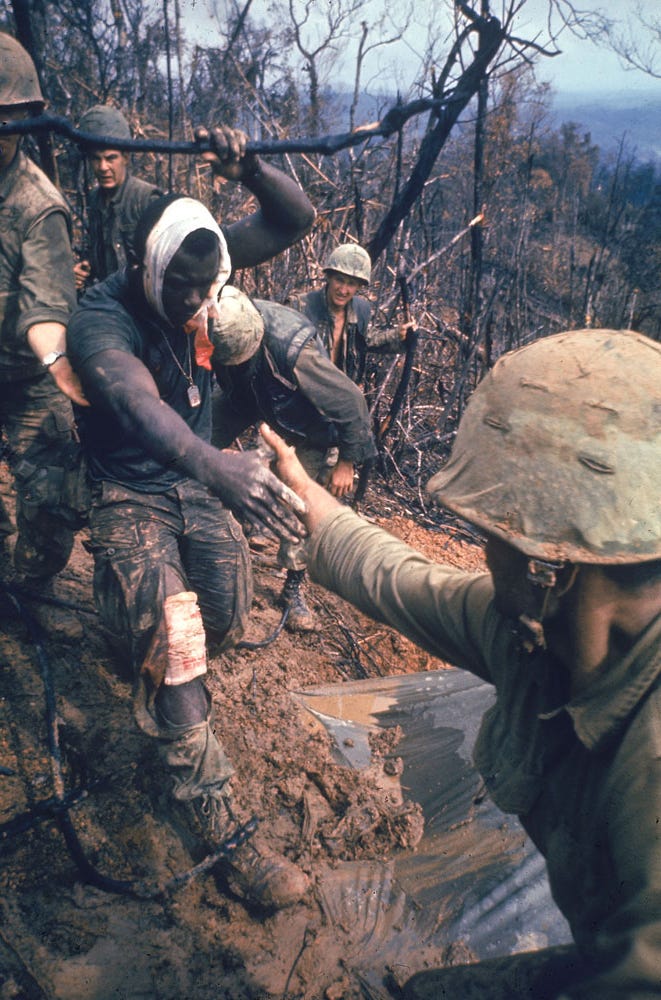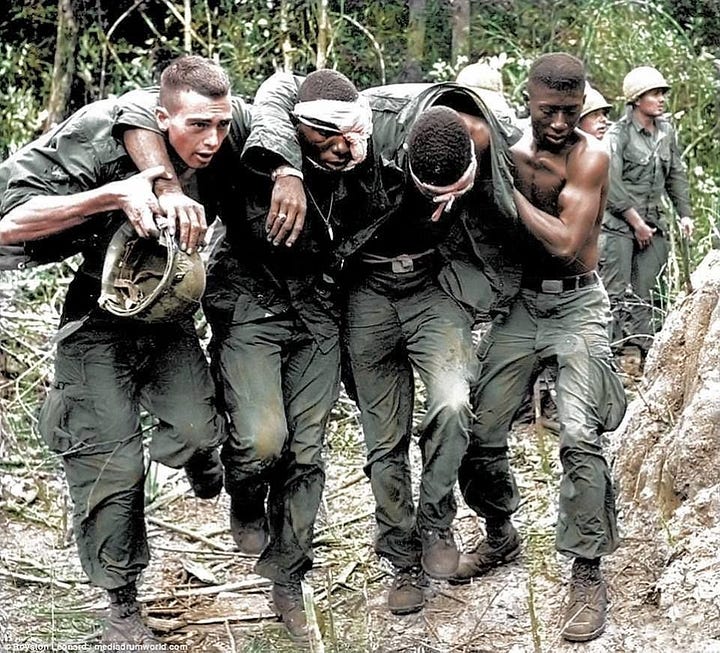



Race relations in combat
Upon my return from Vietnam in 1971, I was assigned to Fort Lewis, Washington where I was an infantry company commander.
One of the lifelong friendships that I developed during that time was with Peter Ammon, who was a fellow company commander in 4/39 Infantry. Like many of us, Peter had recently returned from Vietnam where he served with the famed 101st Airborne Division. However, he made several intermediate stops in various hospitals before arriving at Ft. Lewis, due to the loss of a lower leg in combat.
Peter was among the best officers with whom I have ever served. I never knew any other officer whom I respected more. He was always – and sometimes brutally – honest. Some would say ‘to a fault,’ because his honesty could clash with his own self–interest. Nevertheless, Peter never compromised his principles, even though that would cost him later.
Although some units in Vietnam were marked by racial strife during the latter years of the war (predominantly rear echelon, not front – line combat units), racial divisions were not among the major problems at Fort Lewis when I arrived. We were more concerned about things such as the overall status of morale given the widespread anti-military sentiment at the time, the resulting comparative lower quality of recruits we were getting after the draft was eliminated, and the lack of funding sufficient to support adequate training. These problems, not racial tensions, occupied our everyday lives.
Nevertheless, in ‘72 or ‘73, a new Army bureaucracy, began to arise. New positions and offices were created to educate us all about racial issues and differences. Every officer and NCO in the division was required to attend classes on race relations. It was my observation at the time that after attending these classes, soldiers returned to their units with increasingly divided and hostile views about race. When I personally complied with the mandatory attendance requirement, my observations of the class confirmed that the approach, intended or not, did nothing to create racial harmony but, in fact, had the opposite effect. The classes affirmatively created divisiveness with units, which was potentially destructive to military readiness and performance.
Within just the last few years, the race relations classes of the 1970’s have morphed into a woke, Marxist agenda that is being force-fed to our military personnel. I have addresses some of this previously in "To Win Our Nation's Wars"? (subtitled, “Lions Led by Donkeys”). For a more recent example, take a look this Space Command Lieutenant Colonel (now promoted to full Colonel, one step below general), who advises his audience to “set out your symbols of pride, share your pronouns in your emails, particularly if you’re a person who doesn’t think need to ….”
Today, shortly after seeing an article that included that video, I happened to run across a copy of a letter that my friend Peter wrote in 1973 to our division commander, Major General Fulton, about the destructive race relations classes we were being required to attend. Although in 1973 no one had heard of “DEI,” race relations classes then foreshadowed what is happening to our military today. Upon reading Peter’s letter, I was immediately struck by how applicable his concerns and recommendations are to today’s military, even though he wrote it over 50 years ago.
I therefore reproduce Peter’s 50-year-old letter in full so that you may draw your own conclusions.
Draw your own conclusions about the applicability of Peter’s letter to the woke philosophy being pushed on our armed services today. I shall let it speak for itself, without further comment.







The timing of this article is prescient - I recently saw the video of the Air Force transgender LTC and wanted to discuss the topic with the author, a valued friend and classmate. The LTC is sent by the Air Force to lecture groups about the "value" of Inclusion from DEI being a dominant factor for "readiness" in the Air Force. I had the exact same reaction as the letter written by Peter Ammon - the idea that Inclusion as represented by the LTC is a FastasyLand political position forced by the goverment, and the speeches by the LTC have the exact opposite effect.
I arrived at Ft Lewis May 10th, 1971. Drafted and inducted in the Chicago AFEES Station. I saw one incident there. From then on my experience was one where everyone got along. That was at Ft Sheridan.all but one dept at the clinic I worked at was run by competent black NCOs. I conceded that may have been out of the norm but I saw it as the results of an Army doing things right. Racial animosity was largely absent. We were all in the same boat. DEI could not possibly be worse for the military.